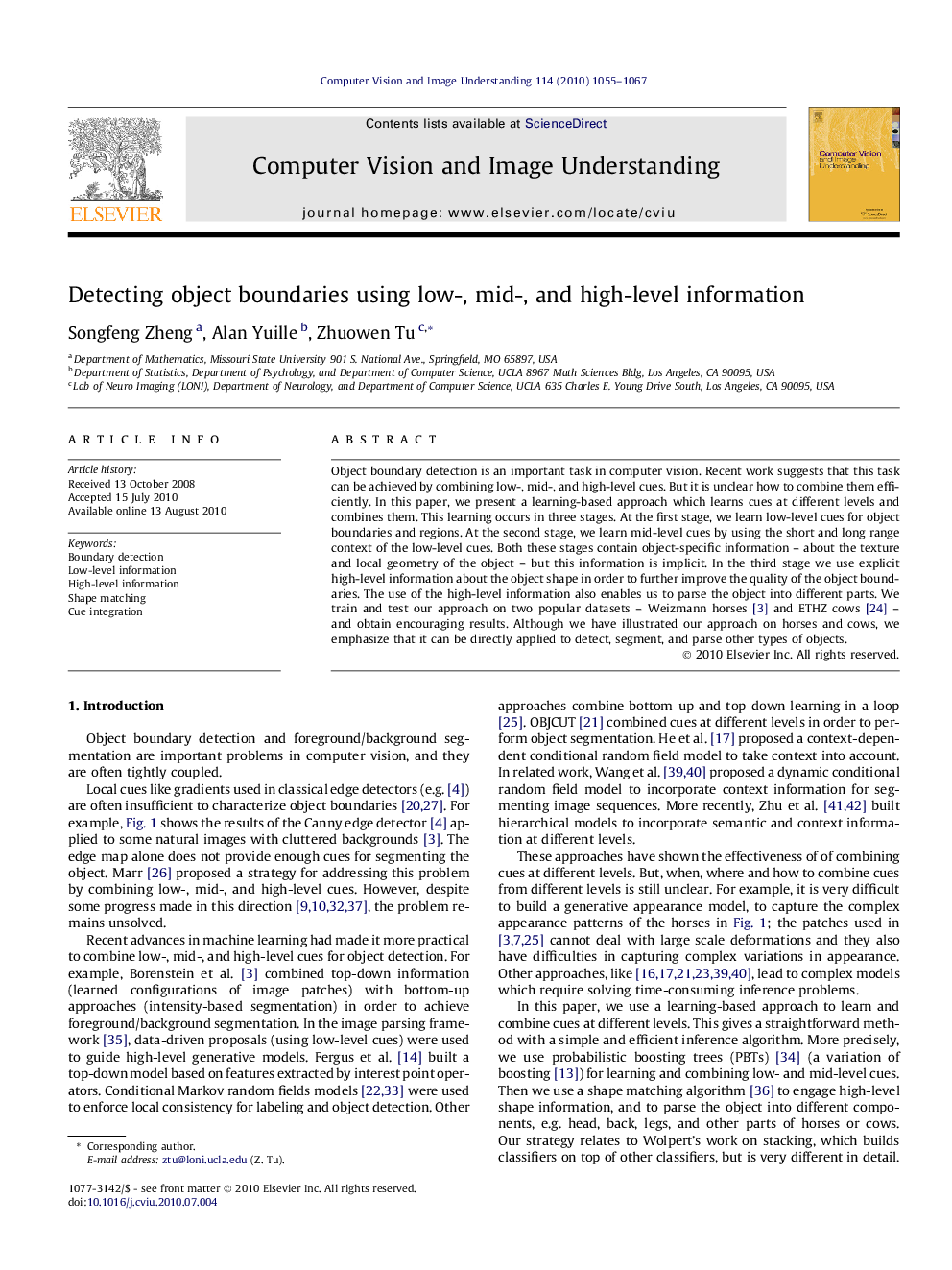| Article ID | Journal | Published Year | Pages | File Type |
|---|---|---|---|---|
| 526192 | Computer Vision and Image Understanding | 2010 | 13 Pages |
Object boundary detection is an important task in computer vision. Recent work suggests that this task can be achieved by combining low-, mid-, and high-level cues. But it is unclear how to combine them efficiently. In this paper, we present a learning-based approach which learns cues at different levels and combines them. This learning occurs in three stages. At the first stage, we learn low-level cues for object boundaries and regions. At the second stage, we learn mid-level cues by using the short and long range context of the low-level cues. Both these stages contain object-specific information – about the texture and local geometry of the object – but this information is implicit. In the third stage we use explicit high-level information about the object shape in order to further improve the quality of the object boundaries. The use of the high-level information also enables us to parse the object into different parts. We train and test our approach on two popular datasets – Weizmann horses [3] and ETHZ cows [24] – and obtain encouraging results. Although we have illustrated our approach on horses and cows, we emphasize that it can be directly applied to detect, segment, and parse other types of objects.
